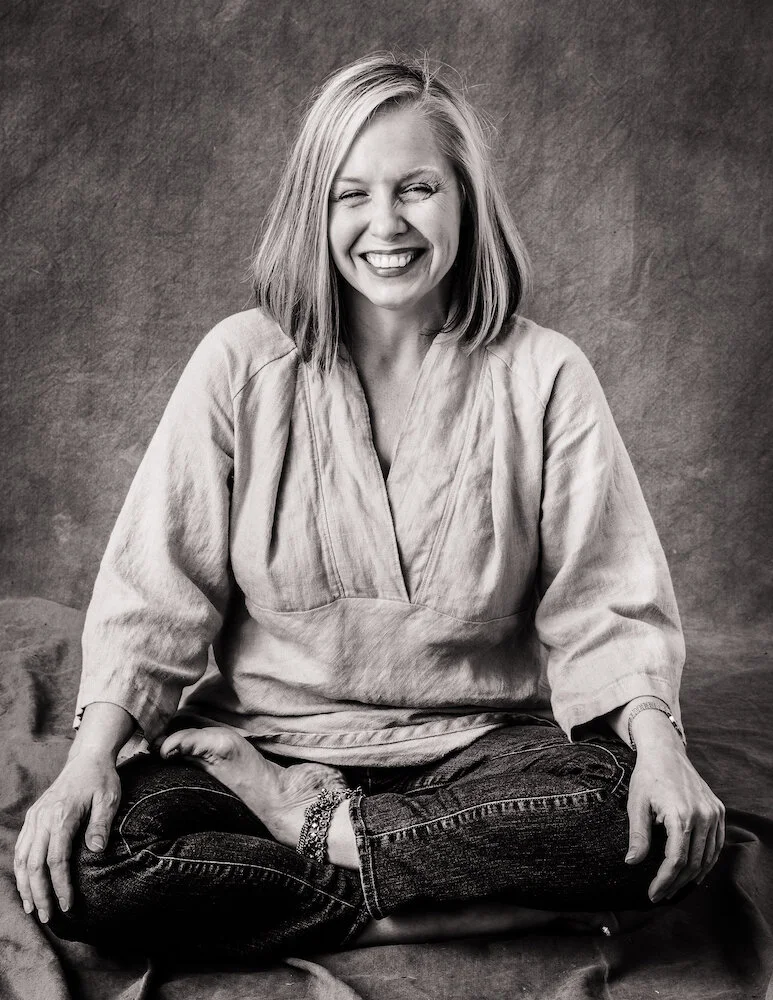Interview with artist Suzannah Schreckhise
Suzannah Schreckhise is a full-time artist living and working in Fayetteville, Arkansas. She is driven to create - with a purpose. Using traditional crafts and what she calls ‘domestic art techniques’, she creates beautiful and meaningful objects of fine art. Suzannah’s work has been recognized locally and nationally with numerous awards and exhibitions. Her work can be found at suzannahschreckhise.art.
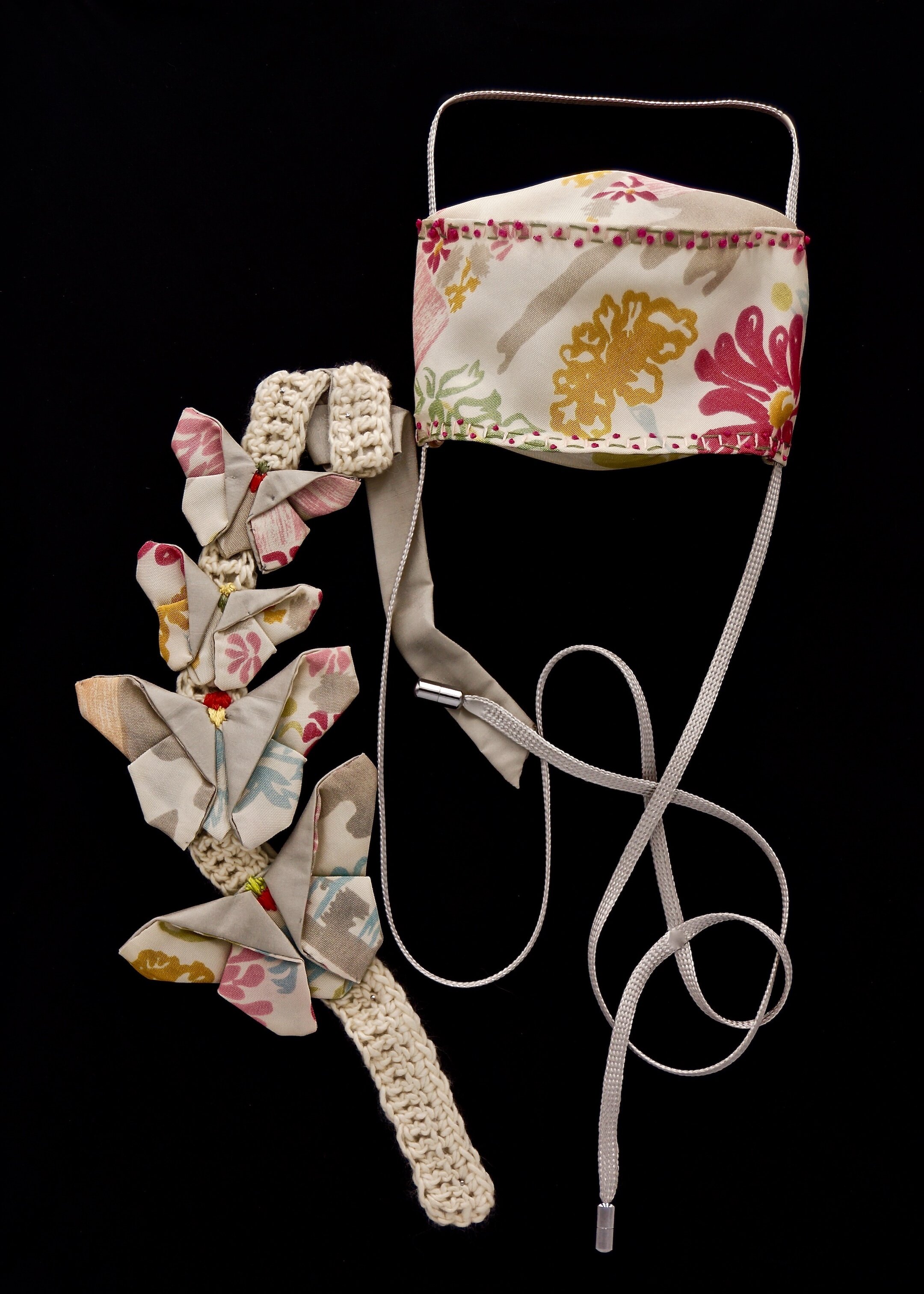

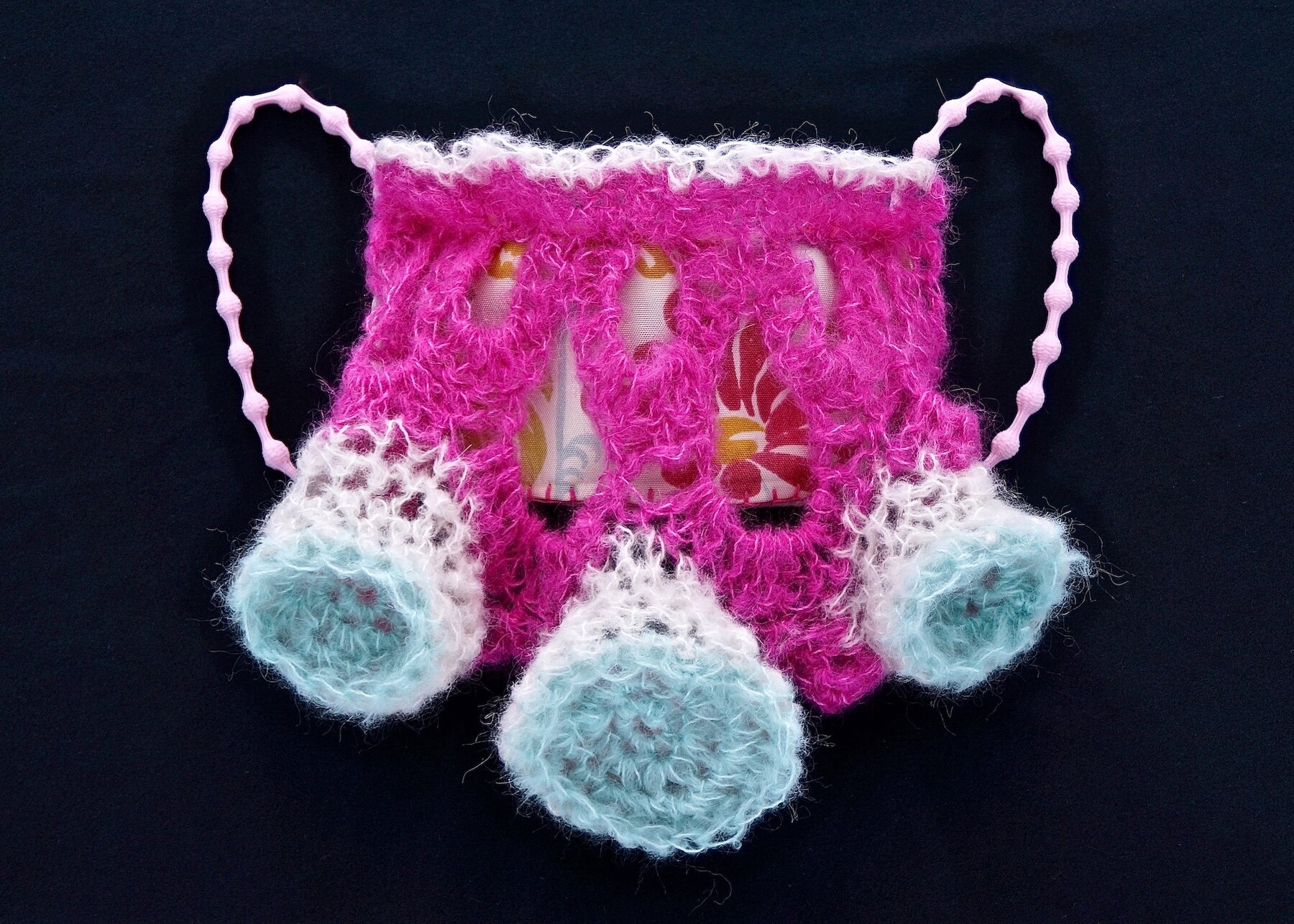
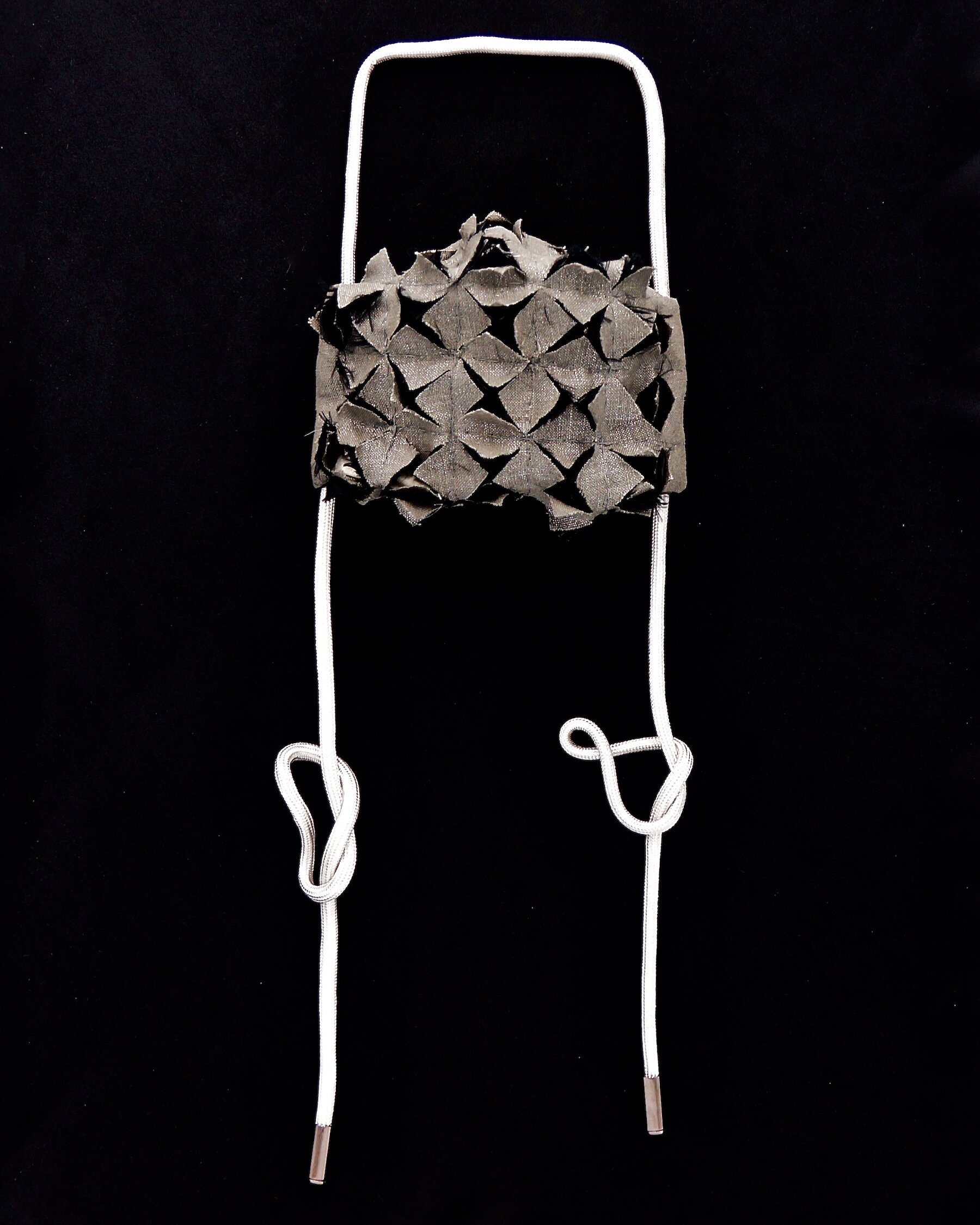
AAS: Suzannah, I understand you are originally from Kansas. How did you end up in Fayetteville?
SS: Yes, I was born in Kansas and lived there until I turned eight. I really had an idyllic life in my early years living in Kansas because I was surrounded by older female family members on my father’s side of the family that had a lot of time to talk and teach me activities. My grandmother taught me about cooking and hand sewing, my great aunt taught me to crochet when I was five years old. These relatives had the kind of time and patience people can't afford to have today. I was encouraged, motivated, and nurtured from a very young age.
I can’t really ever remember not creating. But I think I was about three when I remember drawing and doing craft projects. When I was very young, we lived in Wichita Kansas. My mom would take me to the library, where we would check out copies of famous paintings to hang on our wall. I was always amazed by them and would stare and stare, trying to figure out how they were made.
So, I drew and admired art long before I could read or write. My earliest memories are of drawing—which is funny because I don’t enjoy drawing as a medium for a finished piece of work now. Now, I mostly use drawing as a way to make quick sketches and work out my projects, but when I was little, I was enthralled by it, and particularly loved to draw items that held a strong representation of the real world.
My mom also always had creative materials around and was really good at recycling items from around the house into art. As I said, I learned to crochet when I was five, hand sew around six, and sew on a sewing machine when I was about nine. I started taking private oil painting and pastel lessons after we moved to Dardanelle, Arkansas, when I was nine, as well. I am lucky to have also had many family members on my mother’s side of the family in Arkansas that were creatives as well, especially my mom and aunts, who always encouraged my art and creativity.
AAS: You describe yourself as a ‘craftist’, but your ‘crafts’ have an intellectualism that goes beyond the visual - beyond what I think of when I think of crafts.
“My art practice centers on exploring the unrecognized value of a process or material, from abandoned traditions of craft to discarded pieces of wood.”
SS: Yes, it is a bit confusing. Honestly, I only try to label and analyze my art after I make it. When I started becoming a full-time studio artist at age 50, I didn't realize I would be spending so much time writing about my art. I do see the value in communicating my agenda to others. Although I do understand the importance of it, writing, analyzing and labeling is the hardest part of my art practice.
I do lots of research and reading when I have an idea for a series I want to express. I absorb information and am able to express it in visual ways, but I just don't in writing. I feel sort of like it’s asking a writer to draw or paint about their writing. I have never been an academic because of this.
My art practice centers on exploring the unrecognized value of a process or material, from abandoned traditions of craft to discarded pieces of wood. I see myself as a craftist and work to honor as high art, crafts that have been historically dismissed as domestic, as well as to invite care and emotional presence into artmaking.
I work both spontaneously and deliberately, starting each piece with a plan in mind while also leaving room for my inner voice to guide my response to the qualities of the material itself: the particular flexion in scraps of wood, or the interplay of weights and textures in different fibers overlaid on paint. Even though the way I am operating is through a craft process, all my art are one offs with careful consideration and thought behind the pieces. I often think of crafts as a lot of the same pieces over and over. I think that is where me using crafts skills as a medium transforms it into fine art.
I find that bringing together contrasting materials allows them to talk to one another, creating a conversation in which each material has a distinct voice. Through my work, I celebrate the complex nature of our relationships with ourselves, one another, and the spaces we inhabit. I want to honor the generations that came before us and explore the legacy we leave for those still to come.
Homage to the Perrys, wood, metal, fabric and found objects, 48” x 17” x 13”
One example of this is my altar, Homage to the Perrys. It takes meaning from the traditions of Día de Muertos and creating a visual expression rooted in the southern depression era. As I worked on it, I regularly prayed and meditated and often felt the presence of my grandmother as a free pure soul full of love. My family traditionally cries, prays silently, and is somber at funerals. I appreciate the contrasting Día tradition of celebrating the dead and leaving items on an altar the loved one can occupy themselves with upon the day of returning. It was inspired by my grandmother’s house. She loved to watch TV and she had ten children, so there were photos of all her living children on each television. Paper birds surround the altar with faces of her dead children to fly and be with her in heaven. The hanging Sacred Heart I made from a dress she wore often. The traditional Día skulls are paper mâché with crossword puzzles because she loved to “work puzzles.”
Place 9, Averardo Bessie vintage silk blouse, silk cord, black obsidian stone, origami folding, embroidery,
AAS: The Mask Series is quite beautiful. There is a wonderful retro feel to them – an “if Audrey Hepburn were alive today” kind of feel.
SS: Thank you very much! You are very sweet to draw that comparison. I am really attracted to vintage fabrics and glamour. As an artist who uses textiles to subvert domestic forms, I often make work that assigns abstract marks and gestures to apparently practical forms. During the Covid-19 pandemic, I have made several usable masks out of fabrics with personal history, therefore bringing together materials, texture, and color to evoke specific times and places. My intent is to foster a sense of timelessness and togetherness in the midst of isolation. Shifting a practical object into something fresh and meaningful yields artwork that speaks both to the value of tension as well as the relief felt when we dissolve into the soft material.
This body of work explores the intersections of art, tools, and place. Each mask is a standalone piece of art that also functions as an air filter. Using materials, clothing, and fabrics from my own collection that hold memories, I experiment with assigning both safety and beauty to an otherwise strictly utilitarian object. Working with these old materials and domestic techniques brings a sense of familiarity and comfort during the sudden paradigm shift the global pandemic represents.
These masks, then, are a visual diary of time spent in isolation—breathing with each stitch and working within the framework of each breath to stay mindful and present, while at the same time slipping back to the thought that every breath needs protection in public. Often, I find that I have skipped stitches, or need to take out seams or recut patterns. Each new decision is an opportunity for me to control the tool that has become my sense of place.
Place 8, Polyblend 90’s fabric with silk cord and plastic stops, Canadian smocking lined in dupioni silk drapery fabric
AAS: You are a recent recipient of Artist 360 grant from the Mid-American Arts Alliance to support your nwaMASKproject. Would you talk about that project and what inspired it.
SS: This project is a series of masks and oral histories funded by the Artist 360 grant. I, along with poet Molly Bess Rector, are conducting interviews with participants who are interested in contributing materials with personal significance, which I will make into sculptural masks. If you are interested, you can go to nwaMASKproject.org to apply. There, I have an open application for participants in, near or with ties to Northwest Arkansas that are interested in contributing fiber materials and items that hold personal significance for them—items with compelling stories. The masks are a record of my experience and interpretation of the personal items, stories, and interviews of nwaMASKproject community members. In honor of each person, I make a stand-alone piece of art that functions as a mask. I am so excited about this project. I have procured 5 participants so far. I have been busy interviewing and making the first few masks.
Who Belongs on Our Money?, paper money, diamond dust and acrylic paint, 36” x 36”
AAS: You seem to have been extremely busy and productive in 2020. Let’s talk about the exhibition that just ended - Arkansas Women to Watch: Paper Routes, at the Brad Cushman Gallery at the University of Arkansas Little Rock. What inspired Who Belongs on Our Money? and do you have plans for more works under that theme?
SS: I have been busy. In fact, I won the solo show I had [Attention to Tension] at the Fort Smith Regional Art Museum with the piece, Who Belongs on Our Money? This piece is about American culture assigns a lot of power to money. We exchange it for the material goods we need to survive, trade it for what we most desire. When we don’t have enough, we stress about getting it, and when we have enough, we stress about keeping it. This power is not just material, but symbolic. For better or worse, it represents our ability to fulfill our rights to life, liberty, and the pursuit of happiness: rights promised, on paper, to all Americans regardless of race, religion, gender, or sexual orientation. Why, then, aren’t women or people of color represented on our currency? Who Belongs on Our Money? replaces the portrait of Washington on real paper dollars with figures in more than 100 different skin tones, to draw attention to the symbolic power of money, and to explore the impact of a more inclusive value system.
I do have plans for another piece using dollar bills. I am working on a series to combine my bent wood sculpture, fiber, and collage together. I’m very excited about it. It’s going to be a big piece that hangs from the ceiling.
Coupling, repurposed walnut wood, found granite and nails, 34” x 25” x 6”
AAS: You have created some marvelous sculptures. Coupling and Three have been in juried exhibitions in New York. Would you talk about those works?
SS: These two sculptures were made from wood I salvaged from a dying tree in my yard that have been bent by hand. My sculptures are about being in the moment, celebrating life and relationships with ourselves and others. When I bend wood, I am fully alive and present. If I bend too much it breaks; if not enough, I do not take full advantage of what the wood offers me. In every way possible, I bend, nail, paint, saw, drill, soak in water, and screw in a very spontaneous and deliberate way.
I want to explore vibrant emotions that I experience and share in my life. This process brings new life to reclaimed wood, architectural salvaged materials, and found objects. I want my sculptures to engage and excite, reminding the viewer that beauty can be found in discarded items by transforming them into something meaningful, engaging, aesthetically pleasing, original, and full of life. For example, Coupling is a representation of two living people that are individually whole and intact but connected to each other.
Three, repurposed walnut wood, nails and polyurethane, 39” x 25” x 23”
Shes Breaking the Monolith, wood, nails and acrylic paint, 57” x 20” x 23”
AAS: One of my favorite sculptures is Shes Breaking the Monolith. Is there a story behind that piece?
SS: “Breaking the monolith” is a term used by computer programmers when they are breaking a system down into many smaller, more manageable domains. I see women and others doing this to the system of white traditional men in places of power. The white sculpture is in many pieces and is phallic in shape. The pieces are being rearranged and put into beautiful shapes and softened. The white tower is in a state of decomposition and falling into a beautiful alternative. "Shes" is used in plural form because there are many women standing strong, rejecting the white man’s self-appointed power. Women have come together and supported each other and marginalized groups of society. I think there is evidence that the former president Trump has brought out into the open what other men think and act on behind closed doors. By Trump being blatantly sexist, abusive, and misogynistic in social media, television, and newspapers, he brought the behavior of abusive men out in the open, and women are speaking out about how wrong it is, and that we won't accept this behavior anymore. People are coming together at a grassroots level and speaking out, organizing, and making positive changes.
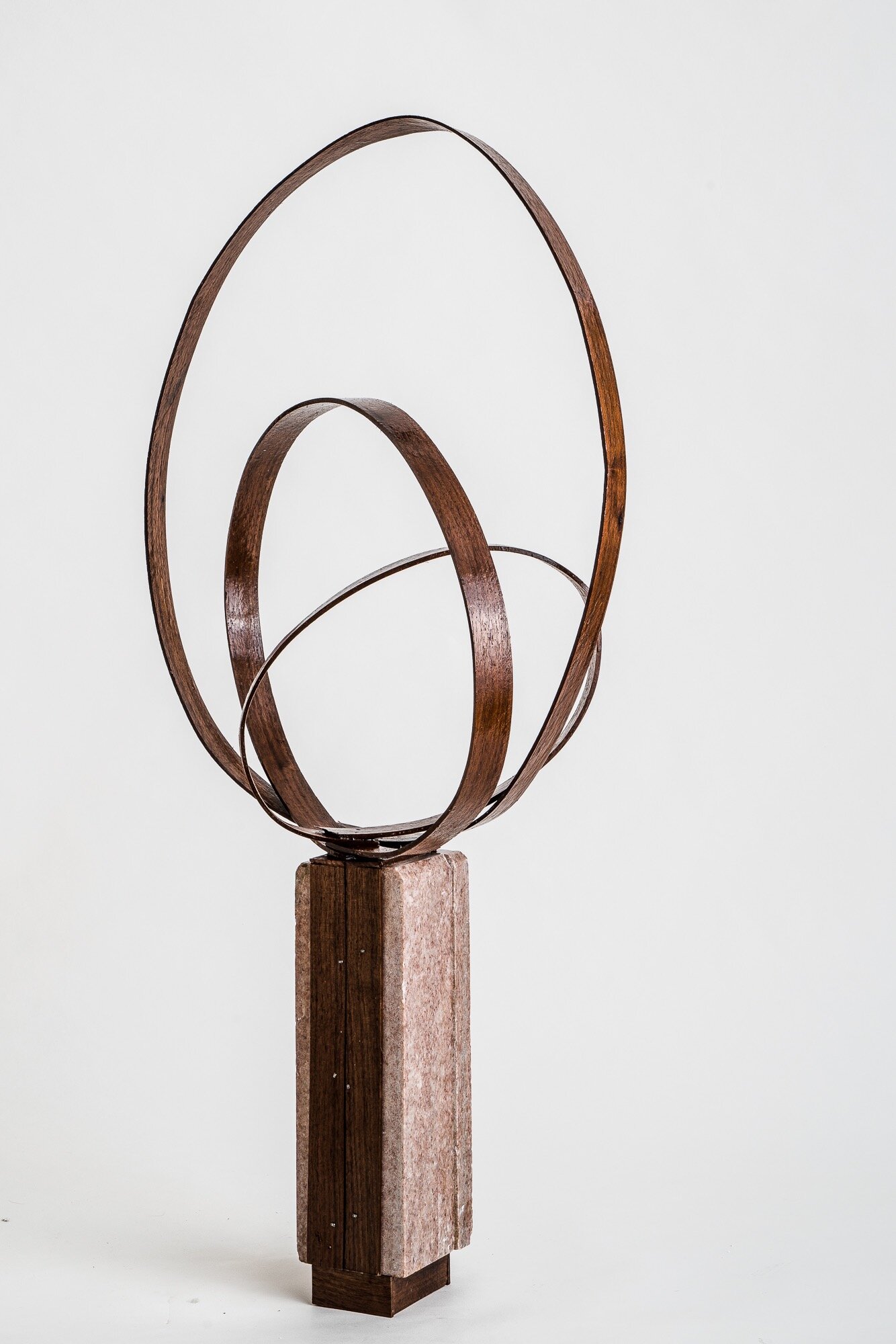
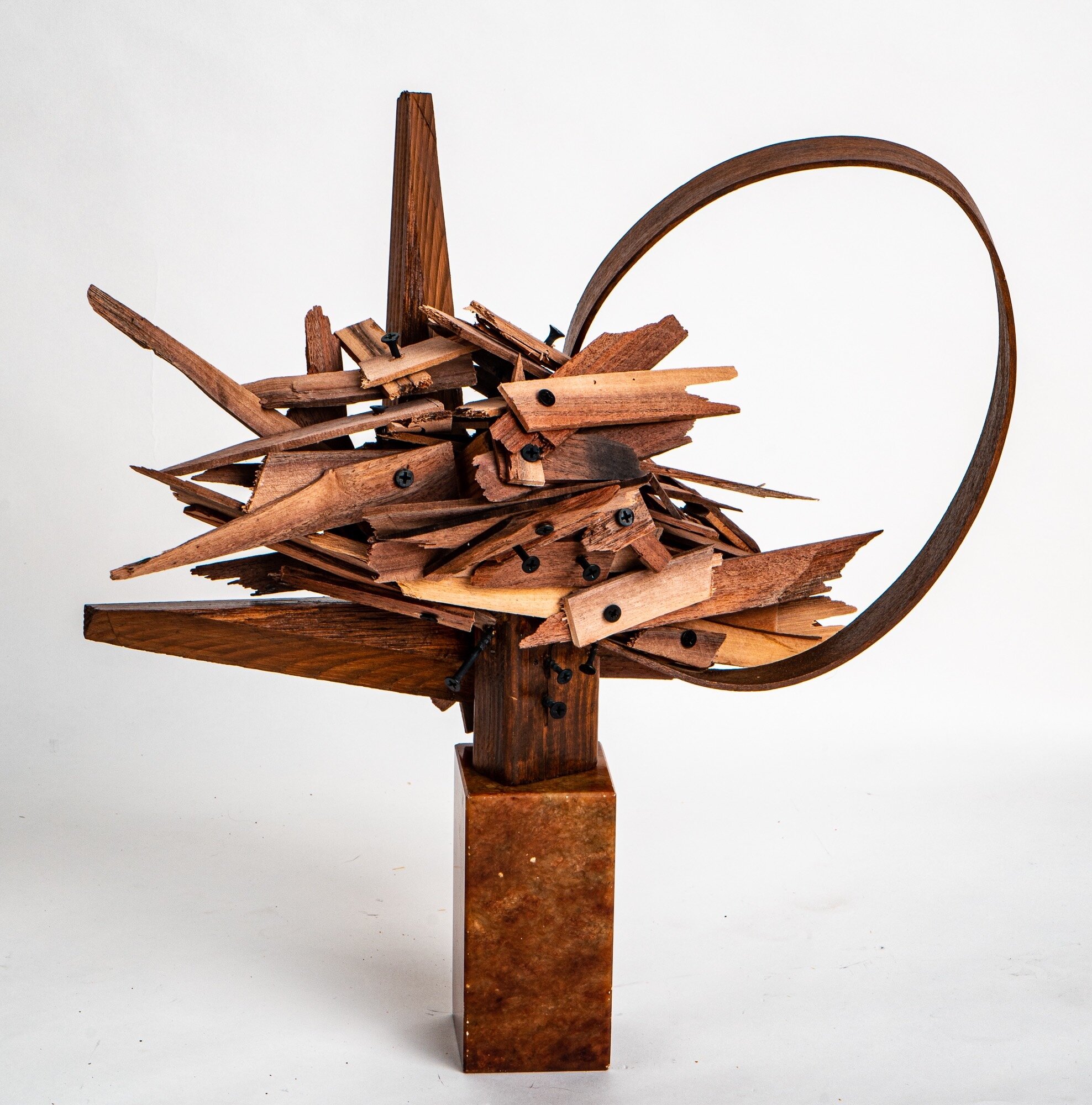
Roses Park, mixed media, 8.5” x 10”
AAS: You also did a series of mixed media/collage works under the title “Women in Jail”. They are all powerful works, but Roses Park is especially striking because it incorporates yarn within the imagery. Would you talk about the series and that work in particular?
SS: In the image Roses Park, the big white baby is throwing a tantrum standing up because a black person chose to sit in at the front of the bus despite there being many seats left on the bus. The embroidery around the Rosa Park’s mugshot images is meant to symbolize unity of all people regardless of their color. I have used Rosa Park’s mugshot to evoke feelings of sadness and anger because a black woman went to jail for taking a seat at the front of the bus because she was tired from working all day in a segregated white neighborhood. Roses Park is meant to ask the viewer to imagine riding with her on the same bus ride from her job with little time left for leisure activities. I think of the bus as being a "Park" for Rosa with her being a lovely Rose.
The image O’Keefe and Goldman with Hat (below) from that series is about Emma Goldman, who was imprisoned for teaching women about birth control. I used Georgia O’Keefe artwork because I and others often associate her with female shapes.
O’Keefe and Goldman with Hat, mixed media, 11” x 8.5”
AAS: You work in the softness of textiles and harsh stiffness of wood and metal. What directs your choice medium?
SS: My art is impromptu and chaotic while leading the viewer’s eye to experience organized lines, shapes, and colors. I look for the deepest meaning possible. Contrasting hard and soft, smooth and rough, dark and light, gives me pleasure. I pick the material I am going to use honestly by what is available at my house, taking into account what I am trying to express. I have and continue to do a lot of remodeling and interior design projects and I am obsessed by all the great materials left over. I have always collected and used architectural salvage items in my projects. I have always sewed, crocheted, and other fiber activities so using salvaged materials came natural to me in both mediums. At first, I was mostly working with collage, and wood medium as well as a little photography. I injured my arm and had to have over 20 stitches and be in bed. That's when I started working with fiber art. Being satisfied with color has always been a challenge for me. I have so many studies I did with crochet and color using Adler's color study exercises. Then, I combined stitches and stretched the knit fabrics afterwards. I am working on some pieces now that are going to combine wood and fiber.
AAS: You exhibit your work all around the country as well as all around Arkansas. That can be very time consuming and expensive. What advice do you have for an up-and-coming artist who would like to exhibit more?
SS: This is an excellent question. I am always trying to figure out the best way to navigate exhibiting my work. I would say it depends on the budget you have to invest in exhibiting. Yes, it is expensive and takes a lot of time away from working on your art. I spent a few months working on a series of sculptures and collages in the beginning and then focused on exhibiting them. I looked at it as an investment in my art business because the more you show the more you can show. Sort of like the people that can get loans don’t need them :)
I do try to enter small pieces when I have to send the art to an exhibition. I would also try to enter all the things Arkansas has to offer for free like the Arkansas Arts Council Registry and Women's Museum Arkansas Registry. It seems very competitive to me in Northwest Arkansas. I have found it's sometimes easier to show outside of NWA. My current goal is to focus on events in smaller Arkansas towns.
